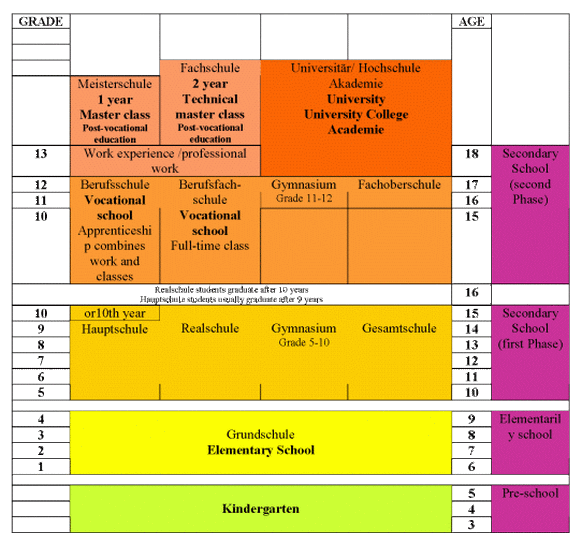Structure of Schools

All public education in Germany is free, including public universities. All students are required to go to Elementary School, or Grundschule. Once students reach the age of ten, they make the decision to enter the next type of school. They have to decide between the Hauptschule, the Realschule, Gymnasium, or Gesamtschule.
Hauptschule: The lowest track in the education system. Grades 5th-9th. Learn basic skills to prepare for their occupation.
Realschule: Learn basic skills to prepare for their occupations. If high enough grades, it is possible to transfer to a Gymnasium.
Gymnasium: Grades 5th-13th; prepares students for a university level education.
Gesamtschule: This school is a combination of the Hauptschule, Realschule, and Gymnasium. At this type of comprehensive school students can switch between the different tracks without changing schools.
Hauptschule: The lowest track in the education system. Grades 5th-9th. Learn basic skills to prepare for their occupation.
Realschule: Learn basic skills to prepare for their occupations. If high enough grades, it is possible to transfer to a Gymnasium.
Gymnasium: Grades 5th-13th; prepares students for a university level education.
Gesamtschule: This school is a combination of the Hauptschule, Realschule, and Gymnasium. At this type of comprehensive school students can switch between the different tracks without changing schools.
